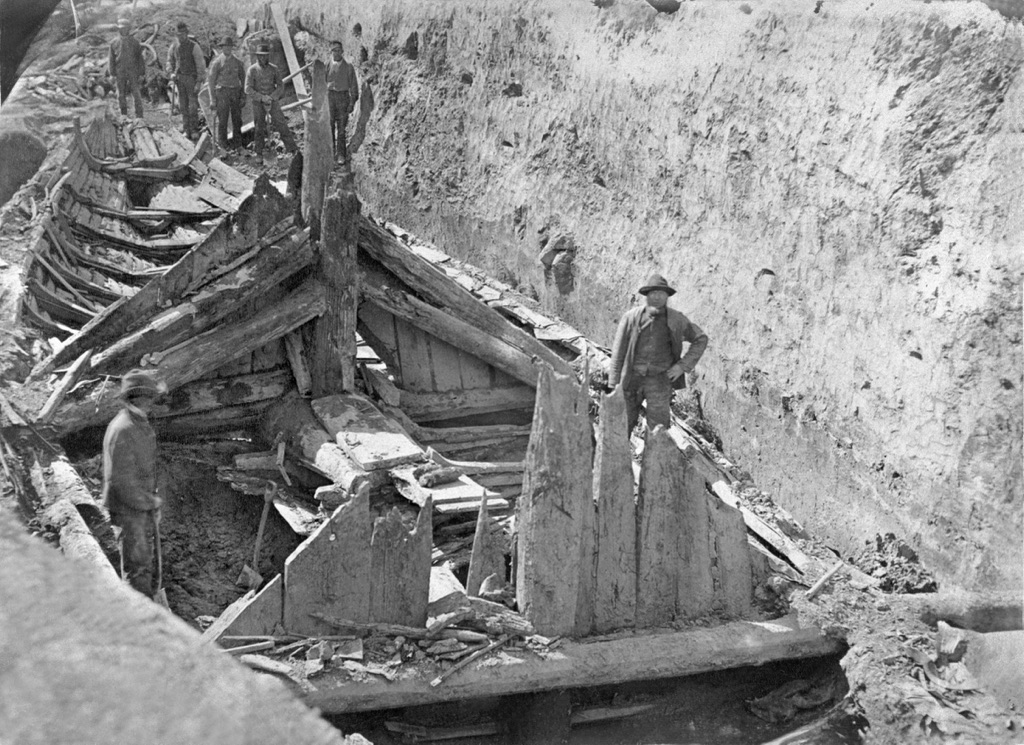The Gokstad Ship Burial: A Pinnacle of Viking Age Archaeology
The Gokstad Mound, located at Gokstad Farm in Sandefjord, Vestfold County, Norway, represents one of the most significant archaeological finds from the Viking Age. Known also as the King’s Mound (Kongshaugen), this site gained international prominence following the discovery of the 9th-century Gokstad Ship, a remarkable example of Scandinavian shipbuilding and burial practices of the era.
Get your dose of History via Email

Historical Context and Discovery
The Gokstad Ship was constructed around 890 AD and was interred in the mound approximately a decade later. Made primarily of oak, the ship measures 23.8 meters in length and 5.2 meters in width. It was equipped with 16 pairs of oars and could reach speeds up to twelve knots. This vessel, now housed at the Viking Ship Museum in Oslo, underscores the advanced maritime capabilities of the Vikings.
The ship served as the final resting place for a petty king, long speculated to be Olaf Geirstad-Alf, the half-brother of Halfdan the Black. However, recent findings have cast doubt on this identification, leaving the identity of the buried chieftain a matter of ongoing research and debate.

Restoration and Recognition
Following two years of restoration, the Gokstad Mound was officially reopened in July 1929. The ceremony attracted thousands of spectators, including King Haakon VII, and marked the site’s importance in Norway’s cultural heritage. In 2014, the Norwegian government nominated the Gokstad Mound for inclusion as a UNESCO World Heritage Site, highlighting its significance in the global archaeological community.

Archaeological Insights
The 1880 excavation led by Nicolay Nicolaysen unveiled not only the ship but also a wealth of artifacts that provide insight into Viking Age life and death. Among the items discovered were a gaming board, fishing hooks, harness fittings, shields, kitchen utensils, beds, a sleigh, and three smaller boats. The burial also included two peacocks, two goshawks, eight dogs, and twelve horses, indicating the high status of the deceased.
Dendrochronological analysis has dated the ship’s construction to between 885–892 AD, with the burial chamber itself dating to 895–903 AD. The chieftain interred within was estimated to be between 181–183 cm tall and died around the age of 40, likely in battle.

Conclusion
The Gokstad Ship Burial stands as a testament to the sophistication and reach of Viking Age Scandinavians. The ship and its accompanying artifacts offer invaluable insights into the maritime technology, social hierarchy, and burial customs of the period. As research continues, the Gokstad Mound will undoubtedly continue to contribute to our understanding of this pivotal era in Scandinavian history.
Sources:
Neural Pathways is a collective of seasoned experts and researchers with a profound passion for unraveling the enigmas of ancient history and artifacts. With a wealth of combined experience spanning decades, Neural Pathways has established itself as a leading voice in the realm of archaeological exploration and interpretation.

